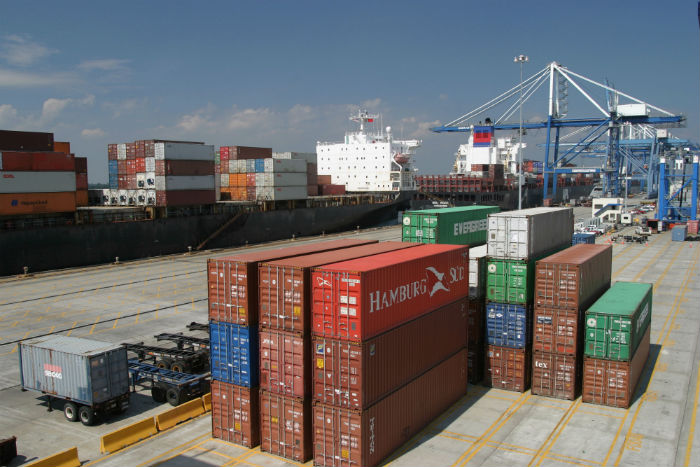Korea has continued to record a current account surplus for 24 months in a row. The Bank of Korea reported on March 31 that Korea’s current account registered a surplus of 4.5 billion dollars in February 2014. The country has been maintaining its surplus record since March 2012, according to the central bank’s balance of payments announcement.
In February 2014, Korea recorded USD 42.8 billion in exports, showing a 1.5 percent growth year-on-year. Its imports recorded a 3.9 percent growth rate since the same time last year, accounting for USD 42 billion.
Such a surplus is mainly maintained by more exports of semiconductors, mobile phones and automobiles. In February this year, Korea’s automobile exports saw 7.7 percent growth over automobile exports in February last year, and recorded exports of USD 36.1 billion in the month. IT devices saw 23.2 percent growth, recording exports of USD 29.1 billion, and semiconductor exports grew by 13.2 percent, amounting to USD 17.9 billion. However, Korea's exports of petroleum products and display panels decreased by 15 percent and 11 percent, respectively.


Starting this February, all current account data has been revised, as the central bank started using a new international standard, known as “BPM6,” to measure the current account. Under the new standard, its current account surplus exceeded USD 79.8 billion last year, up more than USD 9.1 billion from the current account of USD 70.7 billion it announced at the end of this January. Korea’s current account surplus was larger than ever before using both the old and the new figures.
The old standard regarded the act of taking manufactured raw products to overseas factories as an export, and the bringing of manufactured goods from overseas factories into Korea as an import. Under the new standard, however, when domestics firms send raw materials to their overseas factories, it will not be considered an export. Instead, it will regard the production of a final product at an overseas factory as an export when it is sent to a third market.
The Bank of Korea said, “The surplus in goods balance increased to USD 5.4 billion this February, from USD 4.3 billion the previous month. Korea’s service account deficit shrank to USD 1 billion in February, from USD 1.9 billion this January."
The central bank added that the current account surplus compared with GDP is around six percent, which is next to Saudi Arabia and Germany among the G20 countries.
By Yoon Sojung
Korea.net Staff Writer
arete@korea.kr
In February 2014, Korea recorded USD 42.8 billion in exports, showing a 1.5 percent growth year-on-year. Its imports recorded a 3.9 percent growth rate since the same time last year, accounting for USD 42 billion.
Such a surplus is mainly maintained by more exports of semiconductors, mobile phones and automobiles. In February this year, Korea’s automobile exports saw 7.7 percent growth over automobile exports in February last year, and recorded exports of USD 36.1 billion in the month. IT devices saw 23.2 percent growth, recording exports of USD 29.1 billion, and semiconductor exports grew by 13.2 percent, amounting to USD 17.9 billion. However, Korea's exports of petroleum products and display panels decreased by 15 percent and 11 percent, respectively.
A semiconductor production line. (courtesy of Samsung Electronics)

In February 2014, Korea’s current account has been in the black for 24 straight months.
Starting this February, all current account data has been revised, as the central bank started using a new international standard, known as “BPM6,” to measure the current account. Under the new standard, its current account surplus exceeded USD 79.8 billion last year, up more than USD 9.1 billion from the current account of USD 70.7 billion it announced at the end of this January. Korea’s current account surplus was larger than ever before using both the old and the new figures.
The old standard regarded the act of taking manufactured raw products to overseas factories as an export, and the bringing of manufactured goods from overseas factories into Korea as an import. Under the new standard, however, when domestics firms send raw materials to their overseas factories, it will not be considered an export. Instead, it will regard the production of a final product at an overseas factory as an export when it is sent to a third market.
The Bank of Korea said, “The surplus in goods balance increased to USD 5.4 billion this February, from USD 4.3 billion the previous month. Korea’s service account deficit shrank to USD 1 billion in February, from USD 1.9 billion this January."
The central bank added that the current account surplus compared with GDP is around six percent, which is next to Saudi Arabia and Germany among the G20 countries.
By Yoon Sojung
Korea.net Staff Writer
arete@korea.kr
